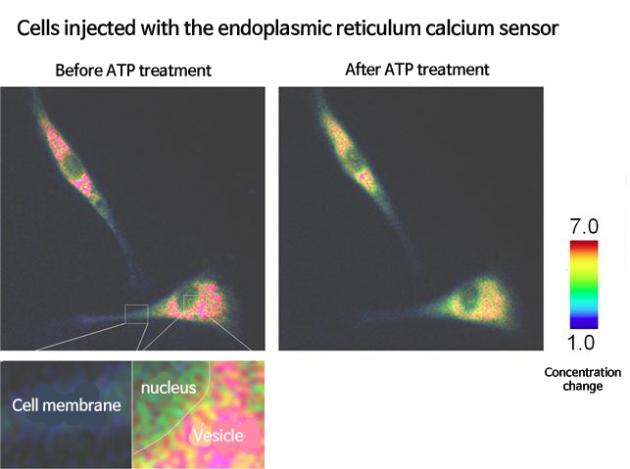A team led by Professor Jeong Sang-hoon정상훈 of Korea Institute of Science and Technology한국과학기술연구원 (KIST) has developed a sensor technology that can measure calcium concentration in the body for the early diagnose of geriatric diseases.
In most geriatric diseases, such as cancer, diabetes, heart disease, and intractable neurological diseases, there is an ongoing decrease in calcium in the endoplasmic reticulum- a major organelle within a cell that plays various roles such as protein production, lipid, and steroid synthesis.
Consequently, preliminary detection of minute changes in human homeostasis can be a major key to early diagnosis of disease.
Professor Jeong’s research team collaborated with Professor Kim Tae-jin김태진 of Pusan National University부산대 to develop the calcium-based sensor called fluorescence resonance energy transfer (FRET), a non-radiant energy transfer between two fluorescent substances that are sensitive to light, KIST said.

The endoplasmic reticulum, also known as a calcium reservoir, is involved in cell death due to aging and is being actively studied as an important therapeutic target for improving and treating geriatric diseases. The sensor can precisely measure the change in calcium concentration in the cell’s endoplasmic reticulum.
The findings, based on FRET, solve the measurement interferences present in the cell known as the disadvantages of conventional fluorescence staining. The researchers changed the structure of the protein-peptide particular region that is responsible for the sensing part of the sensor and improved the sensitivity part to efficiently react and detect the subtle calcium change in the high concentration in the endoplasmic reticulum, making the detection efficiency about twice that of the conventional measurement method.
The researchers tested cell imaging with fluorescent signals to detect calcium changes in the endoplasmic reticulum in the adenosine triphosphate (ATP) treatment, which temporarily reduces the calcium concentration in the sensor cell injection experiments.
“The results of this research will likely be widely used for understanding the roles and interactions of calcium in cellular endoplasmic reticulum in various diseases,” Professor Jeong said. “It will be useful for the early diagnosis of geriatric diseases and the necessary physiological activity and efficacy in natural product and drug development process.”

